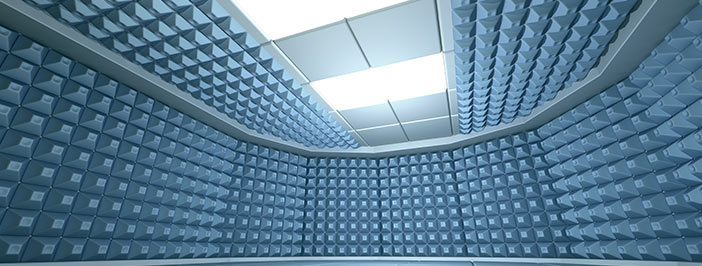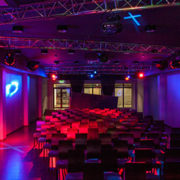3 things an acoustic consultant can do for your work, school or event space
Most of us might have a passing knowledge that some event spaces such as concert venues have “better” sound than others. Or that some places are easier to have a conversation in than others. We might even toss around terms like “good acoustics” or “great sound” to describe them. But we don’t necessarily know how that superior sound quality is achieved.
That, in a nutshell, is what an acoustic consultant does. They make a location’s sound fit your unique needs. And their work goes far beyond concert venues or restaurants. They can also make your workspace, school, hospital and even your personal office more comfortable to work in.
Here are 3 things acoustic consulting can do for your space.
Related: 5 impressive things your organization can pull off with pro AV solutions
Match your aesthetic environment with your acoustic needs
Businesses such as restaurants and concert halls often put a premium on ambiance that we don’t always associate with schools and corporate office spaces. However, ambiance is about more than your aesthetic surroundings, and it matters for these kinds of organizations, too.
Ambiance is also about how the aesthetics in your space conduct or reflect sound. This includes even pragmatic items like furniture, desks, tables and workstations. Making pragmatic decisions when purchasing or arranging these items means more than considering their function in the space.
It also means considering how they will affect the space’s sound needs, too.
That’s where hiring an acoustic consultant can really transform an environment. Whether it’s drop ceiling tiles or the materials a chair is constructed from, the consultant can help you make investments and decisions that can mean the difference between comfortable conversation and deafening background roar.
Create independent working spaces with minimal transmission or sound pollution
Not every subspace within an organization’s environment has the same, or even a single, function.
An acoustic consultant can design subspaces within an office or school to minimize the sound exchange between them.
For example, if an elegant restaurant has a bar space where people tend to cut loose after their meal, the consultant can pair this space with the quiet dining area in a way that minimizes sound transmission between them.
In a school, they can make sure the band’s music stays in the band room and away from the trigonometry exam down the hall.
For an office, they can design a meeting room that keeps the rest of the company away from those loud conference calls the sales guys make ten times a day (that alone is worth almost any investment).
Find the right balance of sound and silence
Acoustics are complex. And most organizations have more than one use in mind for their spaces. Sometimes they might need quiet. Other times, sound that projects. Finding the balance between these two needs often requires a professional touch.
We’ve all had the experience where a noisy vent in a silent room might as well be playing the trumpet in our ear. Or maybe the room is fine when things are quiet, but if two or more people have a conversation, the noise blends together until everyone’s ears are ringing.
These are the kinds of balance problems an acoustic consultant can solve. By taking into account the complex mixture of active and passive acoustics, sound transmission paths and a whole host of other complex technical concepts, the consultant can develop a working strategy to eliminate common sound problems.
Go pro with an acoustic consultant
Got problems with your venue’s sound? Moving into a new office or another location? A little professional consulting can go a long way toward making your space’s sound more functional for years to come.
Sound is an often-overlooked aspect of what makes a space comfortable and effective to be in. Getting it right can make all the difference for years to come, so don’t sleep on it.
Related: 5 ways to maximize your event’s audio visual budget







